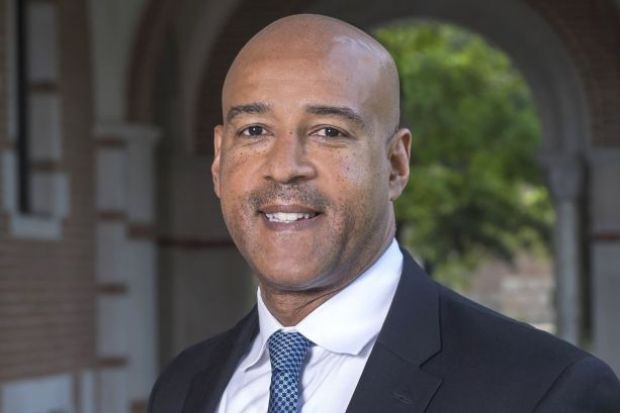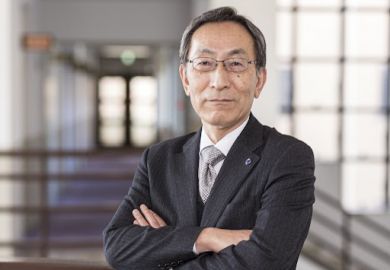Rice University has managed over the past century to become a US research powerhouse despite its small size and location far from the coastal elites.
Now, with its first black and foreign-born leader, the institution founded by a 19th-century slaveholder is looking to break out in several more major directions.
The new Rice president, Reginald DesRoches, is a Haitian-born son of working-class immigrants to New York City whose journey from the hemisphere’s poorest country has reinforced his belief in the power of higher education. “It is an institution that transforms lives,” Professor DesRoches said.
At Rice, he described an agenda for the 7,500-student campus in downtown Houston that includes expanding enrolment and community acceptance of minority students, bolstering medical innovation and research involving renewable energy, and substantially growing campus operations at home and abroad.
The university already scores well on racial diversity at the undergraduate level, said Professor DesRoches, a former Georgia Institute of Technology professor appointed dean of engineering at Rice in 2017, its provost in 2020 and president in July.
But that’s not true at the doctoral level, Professor DesRoches told Times Higher Education. “It’s just not where it should be,” he said. “And they are our future faculty.”
Rice also is lagging on the economic diversity of its student body, Professor DesRoches acknowledged. Rice costs about $70,000 (£60,000) a year, and fully covers those costs for all students with family incomes below $75,000. Yet only about 16 per cent of Rice undergraduates are eligible for the Pell grant – the main federal subsidy for low-income students – and Professor DesRoches said he hoped to see that climb to at least 20 per cent.
Professor DesRoches also has big overseas ambitions. The university has a physical presence in Paris and a shared research centre in India, but little elsewhere. Professor DesRoches is especially determined to address that deficiency in South America, with several reconnaissance trips planned for this spring. “We need to be absolutely strong there, given that we’re just at the foot of the Latin American world,” he said.
That shortfall is especially evident, he said, in Rice’s low rate of study-abroad participation – an experience Professor DesRoches regards as critical to student development. “It just changes your view of the world, changes your mind,” he said.
Some at the university have long attributed the situation in Houston – the nation’s fourth-largest city and one of its most diverse – to students who “are so happy to be at Rice that they never want to leave to go abroad”, Professor DesRoches said. The more likely reason, he said, was that “we haven’t really had a strategy” for expanding global partnerships. “We’re not as globally visible as I’d like us to be,” he said.
Rice also is looking to build relations right across the street with one of its most prominent neighbours, the Texas Medical Center, which is the world’s largest medical complex, and includes the world’s largest cancer hospital and the world’s largest children’s hospital.
“Short of getting a medical school, which we have no plans of doing right now,” Professor DesRoches said, “we need to figure out how we can really be a major player in the biomedical and health space as a university.”
Rice is already a world leader in the material sciences. Based in a city synonymous with the oil industry, it plans a big new push on research into renewable energy. “We are an energy capital of the world, which will soon be hopefully the energy-transition capital of the world, and we need to be a major player in helping that transition,” he said.
Such ideas are key elements of a $2 billion fundraising campaign now in its early stages at Rice. Its goals include expanding Rice’s 700-person faculty by another 200, increasing the student body from 7,500 to 9,000, and spending $300 million on campus construction.
Professor DesRoches said he was confident that Rice can manage that campaign while maintaining philanthropic policies that “make sure that we share values with the donors”.
Those values, he said, included a broad commitment to the liberal arts and student acceptance of diversity. A new academic requirement has Rice students taking a five-week class on diversity concepts when they enter the university, and that is soon to be followed by an additional one-semester course from a menu of choices that explore similar themes with field-specific emphases.
It is part of a “complete overhaul of our general education curriculum”, for the first time in 20 years, he said.
That reimagining also applies to the physical campus. The university is keeping its name, despite the growing recognition of William Marsh Rice as a slaveholder whose estate funded the university – originally known as the William Marsh Rice Institute for the Advancement of Letters, Science, and Art – as a place for white students only. The university, however, is well into the process of rearranging and rebuilding its quad so that a statue of Rice is moved from the centre and supplemented by new statues that “speak to other important people in the history of university”, Professor DesRoches said.
“We’re hoping that this is a great way to represent the real history,” Professor DesRoches said. “He was the founder, he gave the resources to start the university – but at the same time, know he was a flawed person.”
后记
Print headline: Rice leader sets out expansive ambitions




